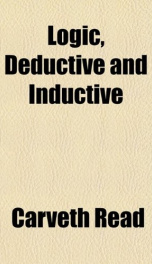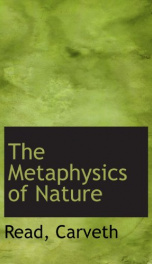Logic

Purchase of this book includes free trial access to www.million-books.com where you can read more than a million books for free. This is an OCR edition with typos. Excerpt from book: white race, or that they have straight black hair, and A tries to prove these propositions, his difficulties greatly increase and may become insuperable. He must collect ethnological evidence, and convince B of its sufficiency ; and if his friend be of a sceptical turn of mind, or desire a reputation for ingenuity rather than for good sense, the conclusion that some white races have straight black hair may be indefinitely postponed. In fact, to follow out this illustration would be altogether unsuitable to an introductory chapter ; we had better turn to a simpler case. Suppose that A holds in his hand a piece of yellow metal, which he asserts to be copper, and that B doubts this, perhaps suggesting that it is really gold. Then A may propose to dip it in vinegar ; and we will suppose B to agree that, if it then turns green, it is copper and not gold. On trying this experiment the metal does turn green; so that we may put A's argument in this way : Whatever yellow metal turns green in vinegar is copper; This yellow metal turns green in vinegar; Therefore, this yellow metal is copper. Now, however, it may occur to B that the liquid in which the metal was dipped was not vinegar, or not pure vinegar, and that the greenness was due to the impurity. A must thereupon show by some means that the vinegar was pure; and then his argument will be that, since nothing but the vinegar came in contact with the metal, the greenness was due to the vinegar; or, in other words, that contact with the vinegar was the cause of the metal turning green. Still, on second thoughts, B may suspect that he had formerly conceded too much ; he may reflect that, although it had often been shown that copper turned green in vinegar, whilst gold did not, yet the same might not always happen. How do we k...
Info about the book
Author:
Series:
Unknown
ASIN:
B008IL8XV6
Rating:
4/5 (3)Your rating:
0/5
Languge:
English
Users who have this book
Users who want this book
What readers are saying
What do you think? Write your own comment on this book!
write a commentGenre
if you like Logic try:
Other books by this author
Do you want to read a book that interests you? It’s EASY!
Create an account and send a request for reading to other users on the Webpage of the book!



